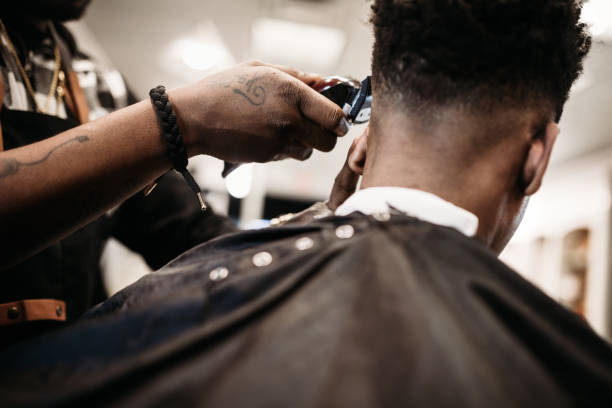The Timeless Evolution of Barbering Instruments and Methods Through the Ages
Wiki Article
Barbering has a deep heritage that spans thousands of centuries, evolving from simple instruments and techniques to the advanced practices used today. The earliest barbers were often clergy or medics who conducted trims and shaves as part of their spiritual or medical responsibilities. In historical Egypt, barbers used sharpened stones and metal tools to style the hair and beard, which were important emblems of status and hygiene. The tools of the profession were not just practical; they also held cultural importance, reflecting the values and convictions of the community at the time.
As civilizations progressed, so did the instruments and techniques used in grooming. In ancient Rome, grooming salons became fashionable social centers where men congregated not only for grooming but also for discussion and relaxation. Barbers used more sophisticated instruments, such as metal blades and brushes, which allowed for more precise trims. The introduction of the flat blade marked a notable development in grooming, providing a closer cut and a more refined appearance. This era also saw the emergence of the grooming sign, a symbol of the profession, which symbolized the blood and dressings associated with grooming surgeons who conducted small medical procedures.
During the Middle Ages, grooming took on new aspects as barbers began to specialize in different offerings. They not only trimmed locks but also offered shavings, oral services, and even bloodletting. The instruments used during this period included the notorious groomer's bowl and the flat razor, which remained common for centuries. The skill of these tools improved, with artisans creating high-quality cutters that were both durable and effective. This era emphasized the significance of cleanliness and individual care, as barbers played a crucial role in upkeeping the well-being and look of their customers.
The industrial era brought about major changes in grooming instruments and techniques. With progress in production, groomers look at this website could access a wider range of tools, including safety blades and powered trimmers. These innovations made trims and shavings more efficient and available to the wider public. The rise of barbershops as local gathering places continued, with barbers becoming trusted figures in their communities. The introduction of new styles and fashions, influenced by popular culture, further transformed the barbering industry, allowing groomers to demonstrate their creativity and skill.
Today, barbering is a blend of classic methods and modern innovations. While many groomers still use straight blades and scissors, powered trimmers have become crucial instruments in the industry. The focus on individual care has expanded to include a range of offerings, such as beard grooming, color coloring, and skincare. Barbershops have transformed into trendy establishments that serve to a varied customer base, providing a inviting atmosphere for all. The enduring transformation of barbering tools and techniques mirrors not only the progress in technology but also the enduring significance of personal care in societal culture.
